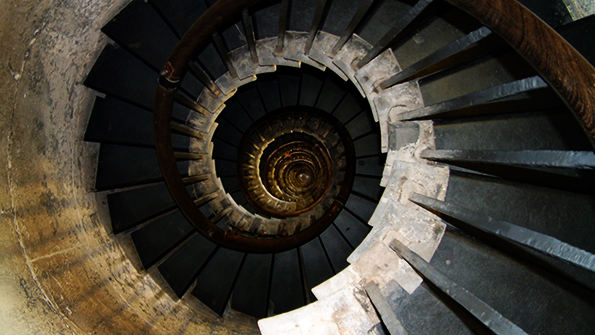

With the introduction of subsidized Metrocards for low-income New Yorkers on the horizon, eliminating the pay-per-ride discount and keeping the increase on unlimited passes at a minimum is probably my preferred outcome, but that choice is akin to just shuffling deck chairs. You can see the proposals in the chart atop this page, and I’m agnostic as to which one the MTA should choose. On its own, the 2019 fare hike isn’t a surprise as the MTA instituted biennial fare hikes beginning in 2011, but with service reliability on the decline, riders seem particularly up in arms over next year’s planned hike. The current cycle will come to a head soon when the MTA Board reconvenes to approve a 2019 fare hike. When the topic arose over the summer, Cap’n Transit wrote a rebuttal to Gordon’s piece, and in the intervening few months, the spiral seems to have worsened. As the cycle repeats, the spiral becomes inescapable until a massive bailout or death. The death spiral encapsulates a budget cycle in which a transit agency recognizes a revenue shortfall due to lower-than-project ridership, raises fares and cuts service to compensate, and thus further dampens ridership, leading to additional shortfalls. A few months ago, Aaron Gordon wrote about it in his newsletter, and I’d like to reframe Aaron’s model slightly. The transit death spiral is a particularly prickly beast to pin down. It certainly seems like New York City’s transit system sits on the edge of a death spiral. Last week, the canary showed up at the MTA Board’s budget meeting as the board books showed a continued decline in ridership, the budget forecast called for service cuts, and the MTA started debating the structure of next year’s fare hike. But when a fare hike is coupled by service cuts amidst a prolonged period with an overall decline in ridership and revenue, the transit death spiral canary starts chirping a bit louder in that coal mine. In fact, regular and predictable fare hikes for, say, a subway ride designed to ensure that revenues remain fairly consistent with inflation and other costs over the long term can be a sign of a robust and well-managed transit system working to compete with other modes of transit. On its own, a fare hike doesn’t portend a looming transit death spiral. A $3 base fare for subway and bus rides are among the fare hike options the MTA is currently debating.


 0 kommentar(er)
0 kommentar(er)
